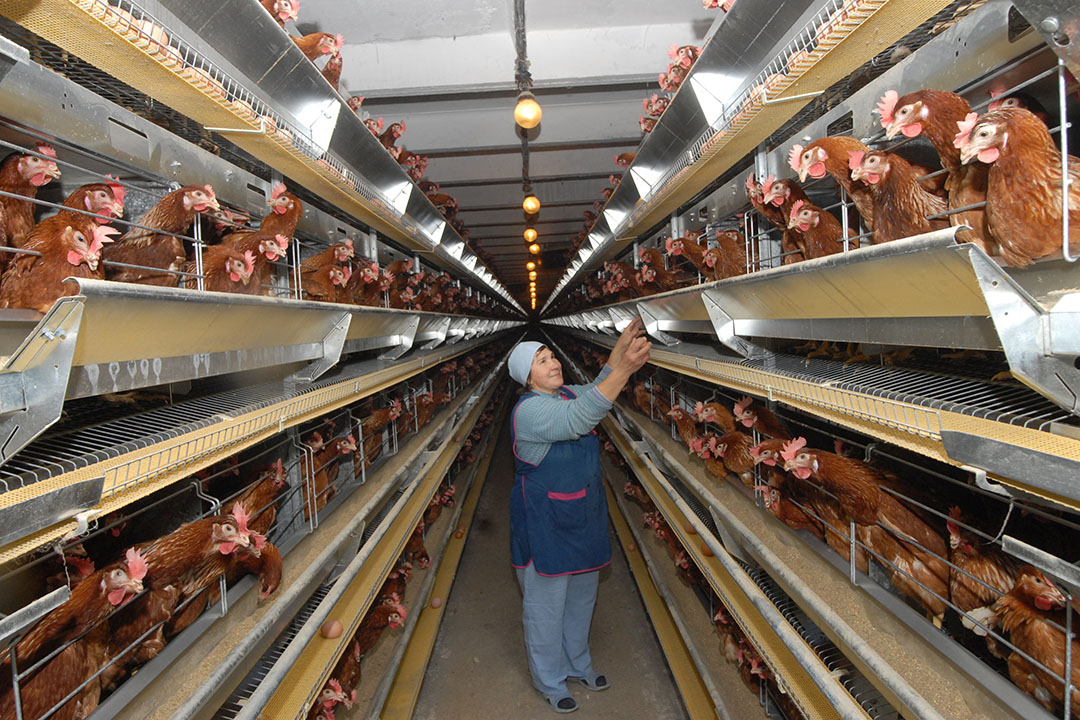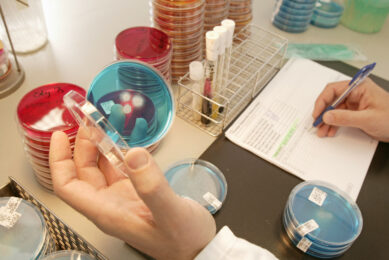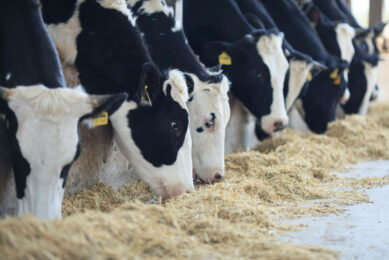The pretend fight against in-feed antibiotics

Russia, Belarus and Kazakhstan declared a common goal to combat antibiotic resistance and to curb the use of in-feed antibiotics, and yet no real steps in that direction have been made so far. Preventive use of antimicrobial drugs are still allowed in these countries with no significant limitations.
There were a lot of talks about antibiotics and the threat of superbugs in Russia in the past few years. Speaking at a press-conference in Moscow in October, Anna Popova, director of the Russian state sanitary watchdog Rospotrebnadzor said that it was necessary to be braced for growing antibiotics resistance, adding that “this is a global problem, which means it has no borders”.
A few days earlier, Tatyana Semenova, deputy Russian healthcare minister blamed “the uncontrolled administration of antibiotics in 20th century for antibiotic resistance”, adding that there was no immediate catastrophe as scientists would “eventually be able to figure out what to do”.
Regulating maximum allowable residues
In October 2018, the Eurasian Economy Commission (EEC) – the governor body of the Eurasia Economy Union (EEU) – published a long-awaited regulation regarding the maximum allowable residues of antibiotics in the unprocessed products of animal origin. The regulation concerned 72 different types of antimicrobial substances, and according to EEC “brought the EEU’s standards on in-feed antibiotics usage in line with the best global practices”. Previously, the maximum allowable content of antibiotics in meat and dairy products in the EEU – the Russia-led trade block comprised of 5 countries of the post-Soviet region – were set only for the 6 types of different antibiotics, specifically chloramphenicol, streptomycin, tetracycline, penicillin, bacitracin and grisein. Everything beyond that list was a blank spot for veterinary officials.
The new regulation has been welcomed in some parts of the Russian meat industry. Speaking at that time, general director of the Russian union of pork producers, Yuri Kovalev, said that with the new regulation the companies purchasing raw materials of animal origin got “at least some standards” of maximum allowable content of antibiotics. On numerous items there were not any standards at all and “even some certainty is better than complete uncertainty”. On the other hand, several Russian business unions spoke against the new regulation. Artem Belov, director of the Russian national union of dairy producers, Soyzmoloko, and Maxim Sinelnikov, deputy chairman of the Russian national meat association filed open letters to the government, asking to postpone the introduction of the new requirements. Concerns were raised that the new regulation set no frequency for testing raw materials for the presence of antibiotics, plus “on some antibiotics no officially approved tests were available at all”.

The EEC regulation has one more important flaw – it did not oblige processors to test the incoming products for the presence of antibiotics, but only recommended them to do that. Basically, this means that all meat-processing and dairy plants were free to choose whether to introduce any monitoring of the presence of the antibiotics in the raw materials or not. The EEU said in a statement on its website that the new regulation was only the first step in dealing with antibiotic resistance. The trade block also planned to design the same regulation concerning the residues of in-feed antibiotics in processed products of animal origin, although so far no details have been given when this new regulation was slated to come into force and whether or not it was going to be voluntary.
…unlike Europe, Russia still permits the use of formaldehyde and its derivatives in feed processing. Manufacturers often take advantage of these loopholes…” – Lybov Savkina, senior analyst of the Russian consulting agency Feedlot.
Still unlimited permitted use
There is no consensus among the Russian industry experts on how widely antibiotics are actually being used in the Russian livestock industry. “In Russia, a relevant doctrine (of preventing antibiotic resistance) has been approved, with the main target to abandon the use of antibiotics in the livestock industry. In addition, some similar legal acts have been introduced at the regional level, for example, in the Belgorod Oblast there is a regional program aimed to phase out the use of in-feed antibiotics,” commented Lybov Savkina, senior analyst of the Russian consulting agency Feedlot.
The major problem that concerns environmentalists and healthcare officials is the preventive use of antibiotics in Russia. The veterinary system is built up in the way so that farmers are free to use antibiotics while growing animals as much as they please. They only need to make sure that the animal has no antibiotics in its body at the time of processing. “As of today, Russian companies can really use in-feed antibiotics in unlimited quantities. The main objective is that the residues of these substances should not be found in the finished products. Unfortunately, this approach significantly differs from the goals of the global campaign aimed to abandon these drugs, and the problem of so-called superbugs which are difficult to treat with current antibiotics. By feeding antibacterial drugs to farmed animals, we contribute to the adaptability of various pathogens, thus creating dangerous and difficult to cure infections,” Savkina said. When it comes to food safety this is not the only point where Russian veterinary rules differ from the common global standards. “Also, unlike Europe, Russia still permits the use of formaldehyde and its derivatives in feed processing. Manufacturers often take advantage of these loopholes, not thinking about the consequences for both human health and employees of their own enterprise,” Savkina said.
Russian agricultural companies are introducing their own programs of controlling the use of feed antibiotics.” – Sergey Lakhtyukhov, general director of the Russian Union of Poultry Producers.
Sergey Lakhtyukhov, general director of the Russian Union of Poultry Producers, however, argued that the Russian farmers were using even less antibiotics than farmers in some Western countries. “Russian agricultural companies are introducing their own programs of controlling the use of feed antibiotics. So I could safely say that in this area we are among leaders. And while other countries declare about the reduction of in-feed antibiotics usage, simultaneously increasing the share of active substances, we are gradually moving towards the reasonable use of antibiotics in agriculture,” Lakhtyukhov said. According to Lakhtyukhov, in 2017 there was no preventive use of in-feed antibiotics in Russia.
“The picture with antibiotic residues is gradually improving in Russia. Most companies are very careful with what products they supply to the grocery shelves, because in our generation with the Internet, for a high-profile company it is much easier, and in the end cheaper ,to avoid any scandals associated with the product quality, than to deal with the consequences,” commented a source in the Russian meat industry who wished to not be named. “As for the preventative use, things vary drastically across the industry. Some companies do their best to use no antimicrobial drugs for preventive purposes, while others do that without any hesitation, especially when there is a high density of poultry or pigs at the farm. This is commonly considered as a cost-saving solution, although this is not the case every time,” he added.
“The control over antibiotic use in Russia is weak, and this concerns not only in-feed antibiotics. For customers it is possible to purchase all kind of antibiotics in every pharmacy in the country without a prescription and take them without any control,” commented Albert Davleyev, president of the Russian consulting agency, Agrifood Strategies.
The use of some big Russian manufacturers of the ‘grown without antibiotics and growth promoters’ label is simply a marketing or promotional trick aimed to confuse customers.” – Lybov Savkina, senior analyst of the Russian consulting agency Feedlot.
Antibiotic-free is the new black
Some companies in Russia have recently began manufacturing food products carrying an ‘antibiotic-free label’, which commonly means that no antibiotics have been used in animal feeding at all. In most cases this was done because of the growing consumer awareness about antibiotic resistance both in and outside Russia. For example, the Russian poultry producer, Sinyavskaya, began producing eggs using no antibiotics, for the sake of a major export contract the company had signed with some unknown Middle East customer.
“Export was one of the reasons that pushed us to this strategy. One of our Arab partners is looking for residual antibiotics in decay products – just like they look for doping in athletes. He promised to add 15% to the price, but the analysis should show zero presence of antibiotics. We supply a royal family and sheikhs, and God forbid their security service would find an antibiotic decay product,” said Arthur Holdoenko, director of the Sinyavskaya poultry farm. Sinyavskaya needs to invest Rub240 million ($ 4 million) per year to grow poultry without antibiotics, Holdoenko added.
One of the biggest Russian poultry producers, Prodo, said that it considered beginning production of poultry without antibiotics. To do that the company needed “to completely re-build almost all production processes” and “it may take years”, the company told local newspaper Agroinvestor. Just like other producers, Prodo was pushed to consider producing poultry without antibiotics because this was in demand among customers. So far, analysts believe that the products on the Russian grocery shelves carrying the label “growing without antibiotics”, actually might be grown with the use of some antibiotics.
“The use of some big Russian manufacturers of the ‘grown without antibiotics and growth promoters’ label is simply a marketing or promotional trick aimed to confuse customers. Quite often, we see when the same big companies claim they are manufacturing products without antibiotics, they are also purchasing large quantities of antibiotics through the competitive bidding procedures,” Savkina concluded. In general, it is clear that the region has a lot more work to do to boost it’s transparency regarding antibiotic use in the livestock sector.







